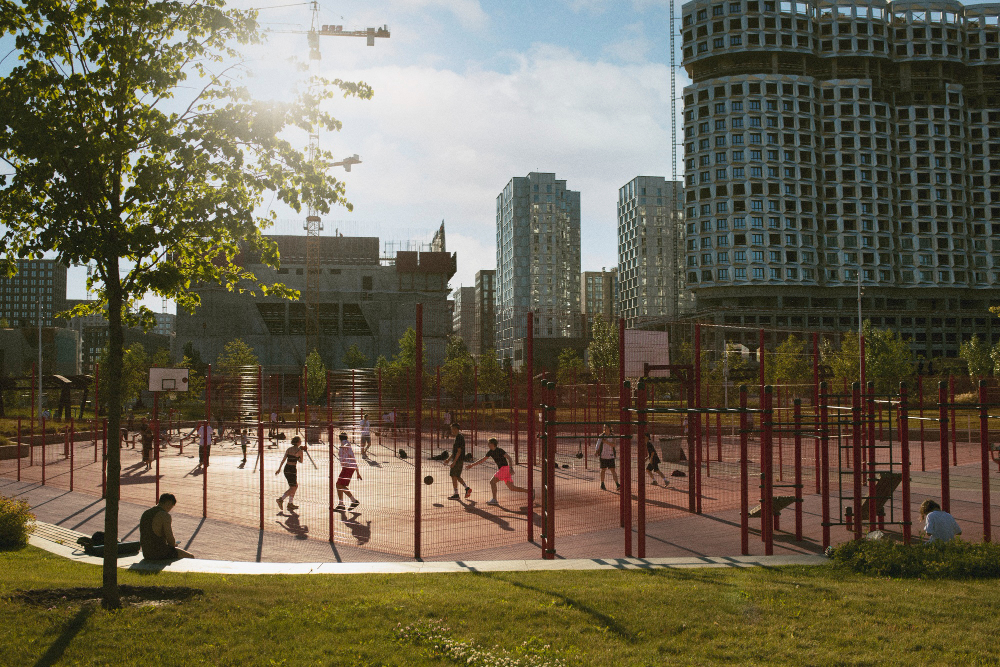Urban Renewal: The Impact of the Project on Public Spaces
- January 30, 2024
- 3 min

In the heart of every city lies a pulse, a vibrant rhythm that echoes through its streets and alleyways. This pulse is the collx“ective heartbeat of its community, and at the forefront of nurturing this vitality stands the Project for Public Spaces. This initiative isn’t just about reshaping urban areas; it’s about reimagining them as thriving hubs of community life. In our exploration today, we delve into how this project is not only changing the face of urban areas but also weaving together the fabric of communities. From revitalizing neglected spaces to fostering social connections, the transformative power of this project is a testament to the potential of thoughtful urban development.
Revitalizing Underused Areas
One of the most striking impacts of the Project for Public Spaces is its ability to breathe new life into underused or forgotten parts of the city. These areas, once overlooked, are transformed into bustling centers of activity. Through innovative design and community engagement, these spaces become more than just physical locations; they evolve into vibrant platforms for social interaction, cultural events, and economic activity. This revitalization not only enhances the aesthetic appeal of the city but also strengthens the community fabric by creating welcoming spaces for everyone.
Encouraging Community Engagement
At the heart of the Project for Public Spaces is the principle of community involvement. This approach goes beyond mere consultation; it actively involves residents in the design and development of their urban spaces. Such participation ensures that these areas truly reflect the needs and desires of the people who use them. This collaborative process fosters a sense of ownership and pride among community members, making these spaces not just physical locations but also embodiments of the community’s identity and aspirations.
Promoting Sustainable Urban Development
Sustainability is a cornerstone of the Project for Public Spaces. The aim is to create urban areas that are not only aesthetically pleasing and functional but also environmentally responsible. This involves incorporating green spaces, using sustainable materials, and designing with an eye towards the future. By prioritizing sustainability, the project ensures that urban developments are not only beneficial for the present generation but are also considerate of future residents and the health of our planet.
Boosting Economic Vitality
An often overlooked but crucial aspect of the Project for Public Spaces is its role in boosting the local economy. By revitalizing public areas, the project attracts businesses, tourism, and local events. This influx not only creates job opportunities but also stimulates local businesses. Vibrant, well-designed public spaces become hotspots for cafes, shops, and cultural venues, creating a ripple effect that benefits the broader economy. The project demonstrates that investing in public spaces is not just about aesthetics but also about economic resilience and growth.
Ensuring Inclusivity and Diversity
Inclusivity is a key ethos of the Project for Public Spaces. The initiative aims to create spaces that are welcoming to all, regardless of age, background, or ability. This commitment to inclusivity means designing areas that are accessible, safe, and accommodating to a diverse range of needs and preferences. By doing so, the project ensures that urban spaces are not just for the few but serve as communal hubs that reflect and celebrate the diversity of the city’s population.
Enhancing Overall Well-Being
The Project for Public Spaces is deeply intertwined with the overall well-being of urban residents. Studies have shown that well-designed public spaces can have a positive impact on mental and physical health. Green spaces offer a respite from urban stress, walking-friendly designs encourage physical activity, and communal areas foster social connections. The project’s focus on creating such spaces means that it plays a crucial role in improving the quality of life for city dwellers, making urban areas not just places to live, but places to thrive.
Conclusion
The Project for Public Spaces is more than just an urban development initiative; it’s a movement toward creating more livable, sustainable, and inclusive cities. Through its focus on revitalizing underused areas, encouraging community engagement, promoting sustainable development, boosting economic vitality, ensuring inclusivity, and enhancing overall well-being, the project is transforming not just urban landscapes but the very way we experience city life.
As we witness the ongoing evolution of our urban areas through this project, we’re reminded of the power of collective effort and vision in shaping the spaces we inhabit. The Project for Public Spaces isn’t just changing places; it’s changing lives, one space at a time. With each step, we move closer to a future where our cities are not just efficient and functional, but also vibrant, inclusive, and nurturing spaces for all who call them home.
Read More:
Shaping Spaces
About Phil Myrick
Phil Myrick is an advisor to planning and development projects around the world and former CEO of Project for Public Spaces. Phil applies research into how people interact with their environments and each other to create vibrant places, destinations, districts, and developments. His strategic advice has helped his clients achieve their goals of attracting people, engaging people in their community, strengthening connections and social fabric, and stimulating economic development. Phil is married with two teenagers and struggles to satisfy his passion for being outdoors or on the water. https://philmyrick.com

